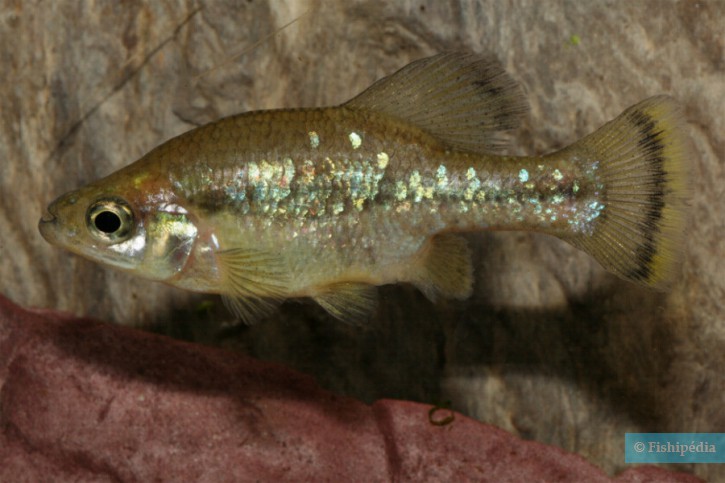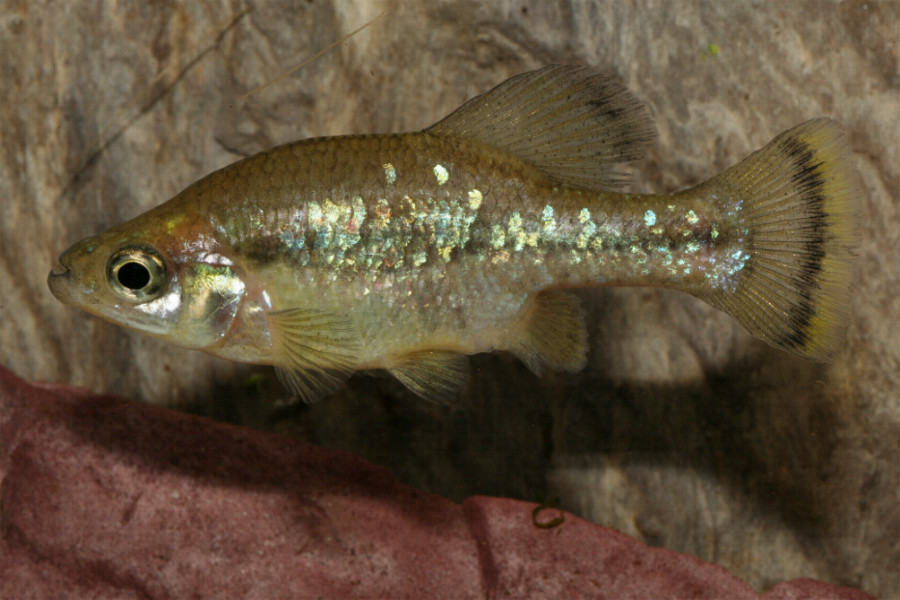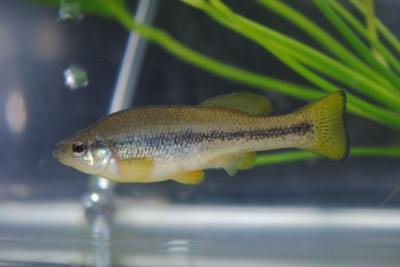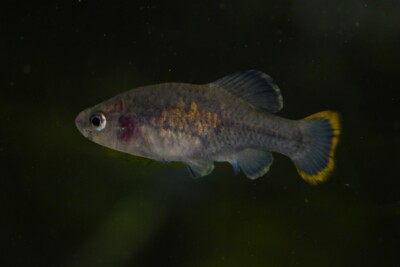Introduction
Ameca splendens, commonly known as butterfly splitfin, is a fresh water fish from the Central America.
This sheet is currently being prepared. The texts currently proposed come from our data model or are being drafted. To request priority for this content, you can write to us HERE.
Who is it?
Morphology
-
Type
-
Average size8 cm
-
Maximum size13 cm
-
Longevity5 year
-
Type
-
Average size8 cm
-
Maximum size13 cm
-
Longevity5 year
How to recognize This fish ?
The butterfly splitfin measures around 8 cm. The females are more imposing and some specimens can reach 13 cm. This fish is multicolore with a predominantly jaune, argent and noir body.
Sexual dimorphism
The female is bigger than the male.
Behaviour & Life cycle
-
dietcarnivorous
-
Sociabilityliving in small groups
-
territorialNo
-
Way of livingdiurnal
The butterfly splitfin is a fish living in small groups naturally found mid-depth and near surface. The members of each group are organized around a well established hierarchy. This species is carnivorous .
Although the butterfly splitfin is non-territorial, it is sometimes aggressive towards other species. It also shows signs of aggression towards its conspecifics. The species is organized around a hierarchy with dominant-dominated relationships.
Reproduction
-
Reproductionvivipare
The butterfly splitfin is a fish vivipare.
Harmless species
This species does not represent any particular threats to humans when encountered in its natural environment.
Origin and distribution
Conservation status of populations (IUCN)
What is its habitat?
Natural environment characteristics
-
Temperature15 - 32 °C
-
pH (acidity)7 - 8
-
gh (hardness)10 - 30
Biotope presentation
Species of the same biotope
To go further
Sources & Contributions
Participation & Validation
The Fishipedia team and specialist contributors are committed to providing high-quality content. However, although the information comes from scientific sources or testimonials from specialists, the cards may contain inaccuracies.
Translation
Translation done with the valuable contribution of our translators, who make this information available to a wider audience. We sincerely thank them for their commitment.
Scientific partners
Species of the same family
Species of the same biotope















